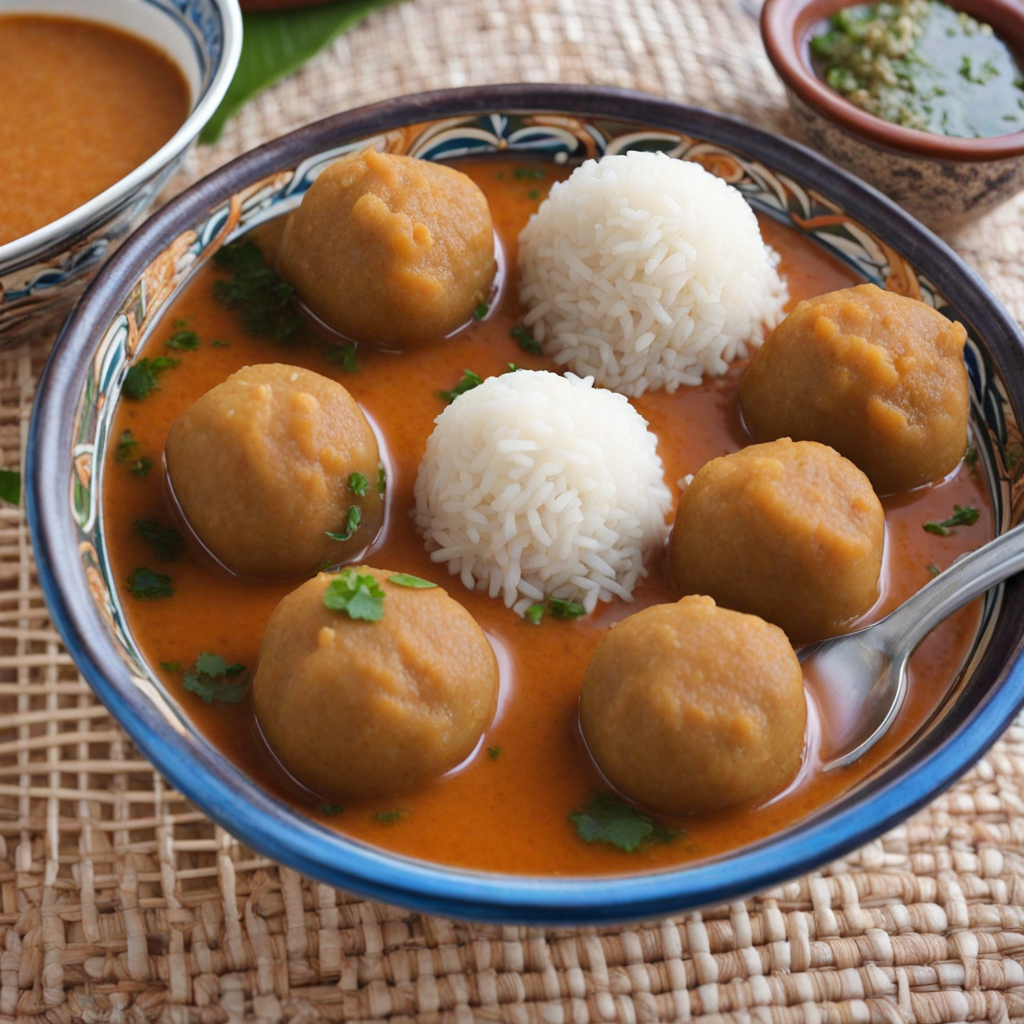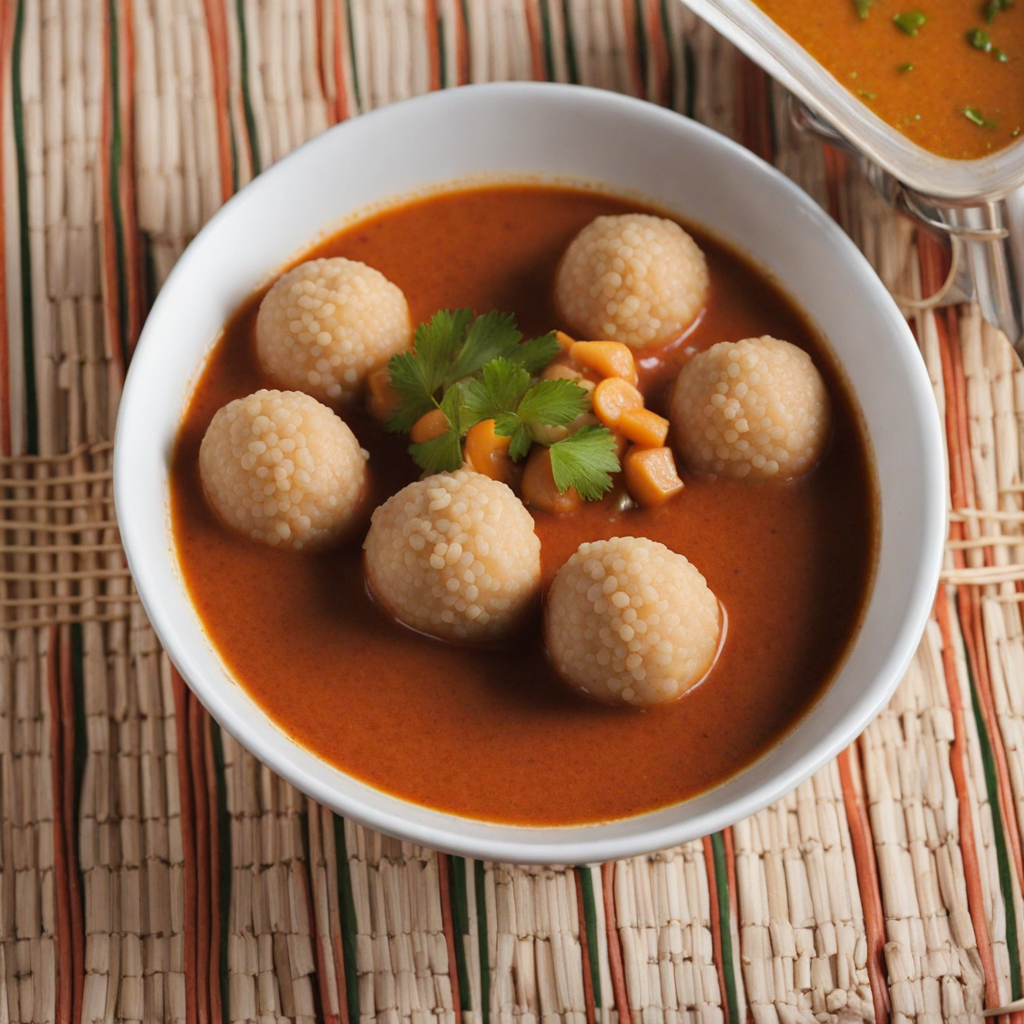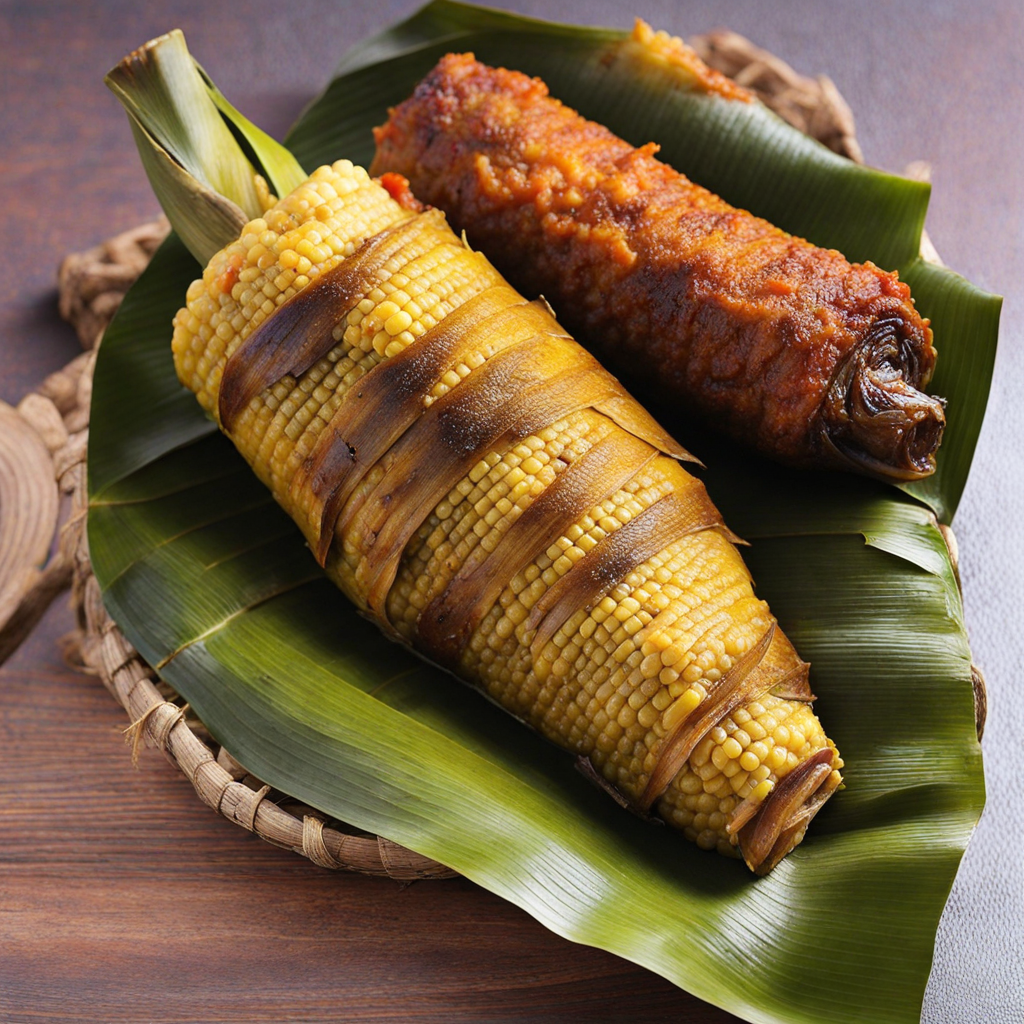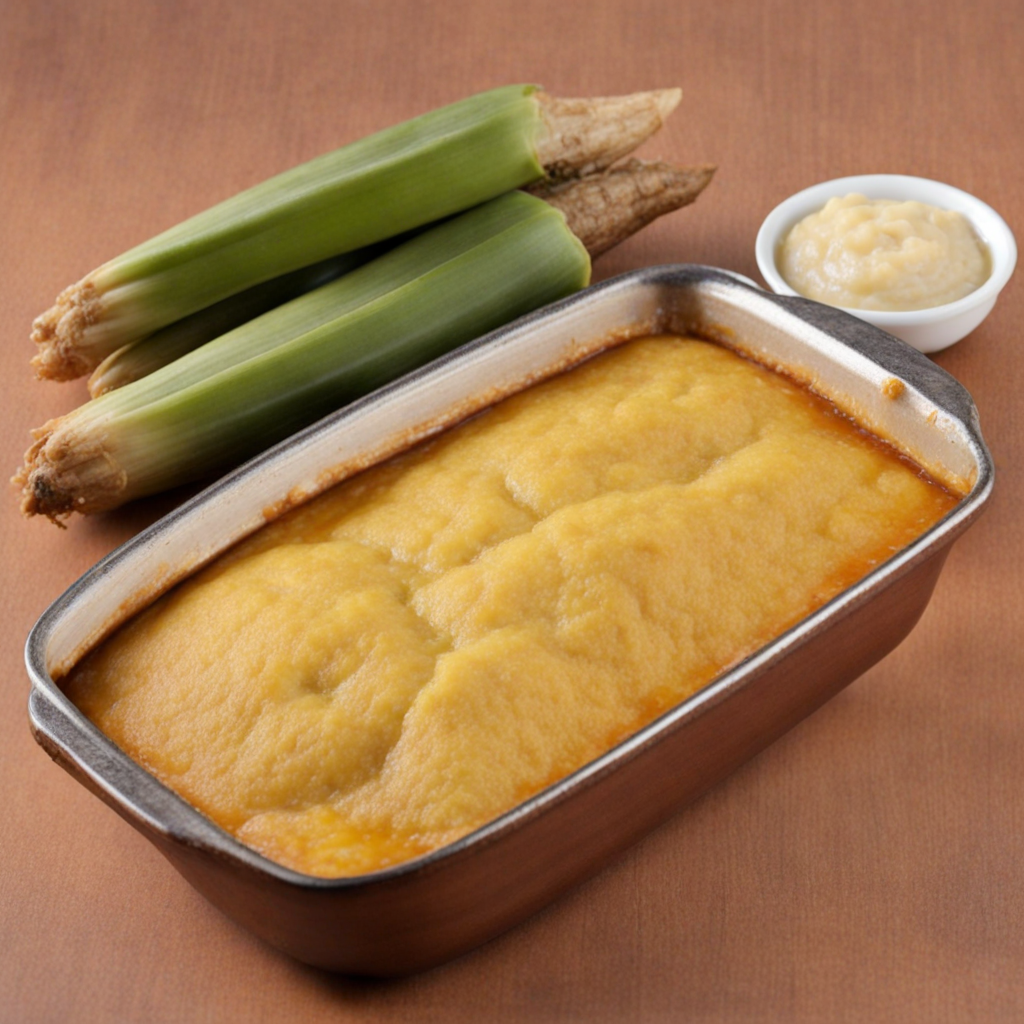Omo Tuo
Omo Tuo is a delightful Ghanaian dish that showcases the rich culinary traditions of West Africa. This dish consists of soft, sticky rice balls that are often served alongside a variety of savory soups or stews. The rice used to prepare Omo Tuo is typically a short-grain variety, which gives it its characteristic texture, allowing it to be easily molded into smooth, round shapes. The simplicity of the rice's flavor provides a perfect canvas for the bold and robust flavors of the accompanying sauces, making it an essential staple in Ghanaian households. Traditionally, Omo Tuo is paired with groundnut soup, light soup, or palava sauce, each offering a unique taste experience. Groundnut soup, made from peanuts, provides a creamy and nutty complement to the rice, while light soup is known for its spicy and aromatic profile, often enriched with fish or meat. Palava sauce, on the other hand, is a rich, flavorful sauce made with vegetables, fish, or meat, and is ideal for those seeking a heartier meal. The combination of Omo Tuo with these soups creates a satisfying and comforting dish that highlights the balance of flavors in Ghanaian cuisine. Serving Omo Tuo is a communal experience, often enjoyed with family and friends. Diners typically use their hands to break off pieces of the rice balls, dipping them into the accompanying sauces, which adds to the communal and interactive nature of the meal. This tradition not only enhances the flavor but also fosters a sense of connection among those sharing the meal. Whether enjoyed at a local eatery or prepared at home, Omo Tuo is a delicious introduction to the vibrant and diverse flavors of Ghana, inviting adventurous eaters to explore the heart of West African gastronomy.
How It Became This Dish
The History of Omo Tuo: A Culinary Gem from Ghana Omo Tuo, often referred to as "rice balls," is a traditional Ghanaian dish that holds a special place in the hearts and stomachs of many Ghanaians. This simple yet delightful food has evolved over centuries, shaped by the cultural, agricultural, and economic influences of the region. To understand Omo Tuo is to delve into the rich tapestry of Ghanaian cuisine and the historical narratives that accompany it. #### Origins of Omo Tuo The origins of Omo Tuo can be traced back to the agrarian societies of West Africa, where rice was first cultivated. It is believed that rice was introduced to the region via trade routes from Asia and the Middle East. The introduction of rice into Ghanaian cuisine can be attributed largely to the migrations of various ethnic groups, including the Fante, Ewe, and Dagbani people. Rice cultivation flourished, particularly in the northern regions of Ghana, thanks to favorable climatic conditions. As communities began to embrace rice as a staple food, various cooking techniques and styles emerged, giving rise to dishes like Omo Tuo. The preparation of Omo Tuo involves boiling rice until it reaches a soft, sticky consistency, which is then shaped into balls, making it easy to eat with the hands—an essential aspect of traditional Ghanaian dining. #### Cultural Significance The cultural significance of Omo Tuo extends beyond its mere consumption; it is a symbol of hospitality, community, and familial bonds. In Ghana, sharing a meal is an essential ritual that fosters connections and strengthens relationships. Omo Tuo is often served at communal gatherings, celebrations, and festivals, where it brings people together. The dish is frequently paired with a variety of soups, stews, or sauces, such as groundnut soup or light soup, enhancing the communal dining experience. In addition to its role in social gatherings, Omo Tuo holds a place in the daily lives of many Ghanaians. It is a common dish for breakfast or lunch, often enjoyed with spicy stews that add to its flavor profile. The versatility of Omo Tuo allows it to be adapted to various tastes and preferences, making it a beloved meal for people of all ages and backgrounds. #### Development Over Time As Ghana has evolved, so too has the preparation and presentation of Omo Tuo. The dish has seen numerous adaptations, influenced by factors such as globalization, urbanization, and culinary experimentation. Traditional methods of preparation, which involved the labor-intensive process of hand-molding rice into balls, have been supplemented by modern techniques. The advent of rice cookers and other kitchen appliances has made it easier for families to prepare Omo Tuo, allowing for greater convenience in meal preparation. Moreover, the growing interest in healthy eating and the use of local ingredients has led to a resurgence of traditional dishes like Omo Tuo. Many Ghanaians living abroad are rediscovering their culinary heritage and sharing it with new generations, leading to a revival of traditional recipes and cooking methods. This has resulted in Omo Tuo being featured in fusion cuisines and innovative restaurants, where chefs experiment with flavors and presentations while honoring the dish's origins. The globalization of food culture has also introduced new ingredients and techniques that have found their way into the preparation of Omo Tuo. For instance, some modern interpretations incorporate herbs, spices, or different types of rice, such as brown rice or jasmine rice, to create unique variations. This evolution reflects the dynamic nature of cuisine, where traditions are respected but also adapted to contemporary tastes and lifestyles. #### Omo Tuo in Contemporary Ghana Today, Omo Tuo remains a staple in Ghanaian households and is widely served in local eateries, known as "chop bars," where traditional dishes are prepared and served in a casual setting. The continued popularity of Omo Tuo is a testament to its resilience and adaptability, as it has weathered the changes brought about by modern culinary trends while maintaining its core identity. Additionally, Omo Tuo has gained recognition on international platforms, showcasing Ghanaian cuisine to a broader audience. Food festivals, culinary competitions, and social media have played a crucial role in promoting traditional dishes like Omo Tuo, allowing food enthusiasts from around the world to appreciate its rich flavors and cultural significance. #### Conclusion Omo Tuo is more than just a dish; it is a reflection of Ghana's history, culture, and the bonds that unite its people. From its humble origins as a staple food to its place in contemporary Ghanaian cuisine, Omo Tuo embodies the spirit of adaptability and resilience that characterizes Ghanaian culinary traditions. As the world continues to embrace diversity in food, Omo Tuo stands as a delicious testament to the country's rich heritage, inviting everyone to partake in its flavorful journey. Whether enjoyed at a family gathering, a local eatery, or a modern restaurant, Omo Tuo remains a beloved culinary gem that will continue to thrive in the hearts of Ghanaians and food lovers alike.
You may like
Discover local flavors from Ghana







